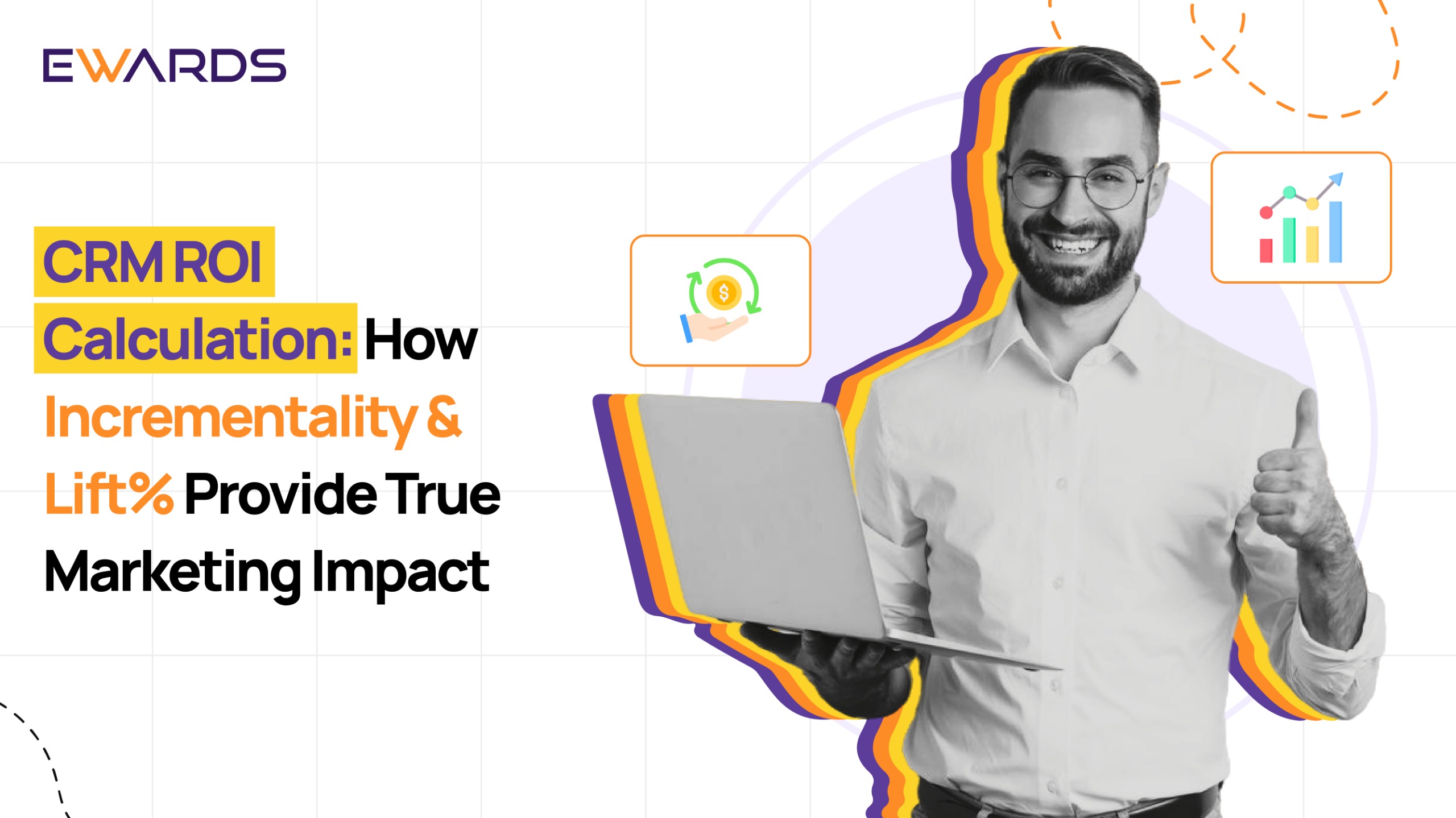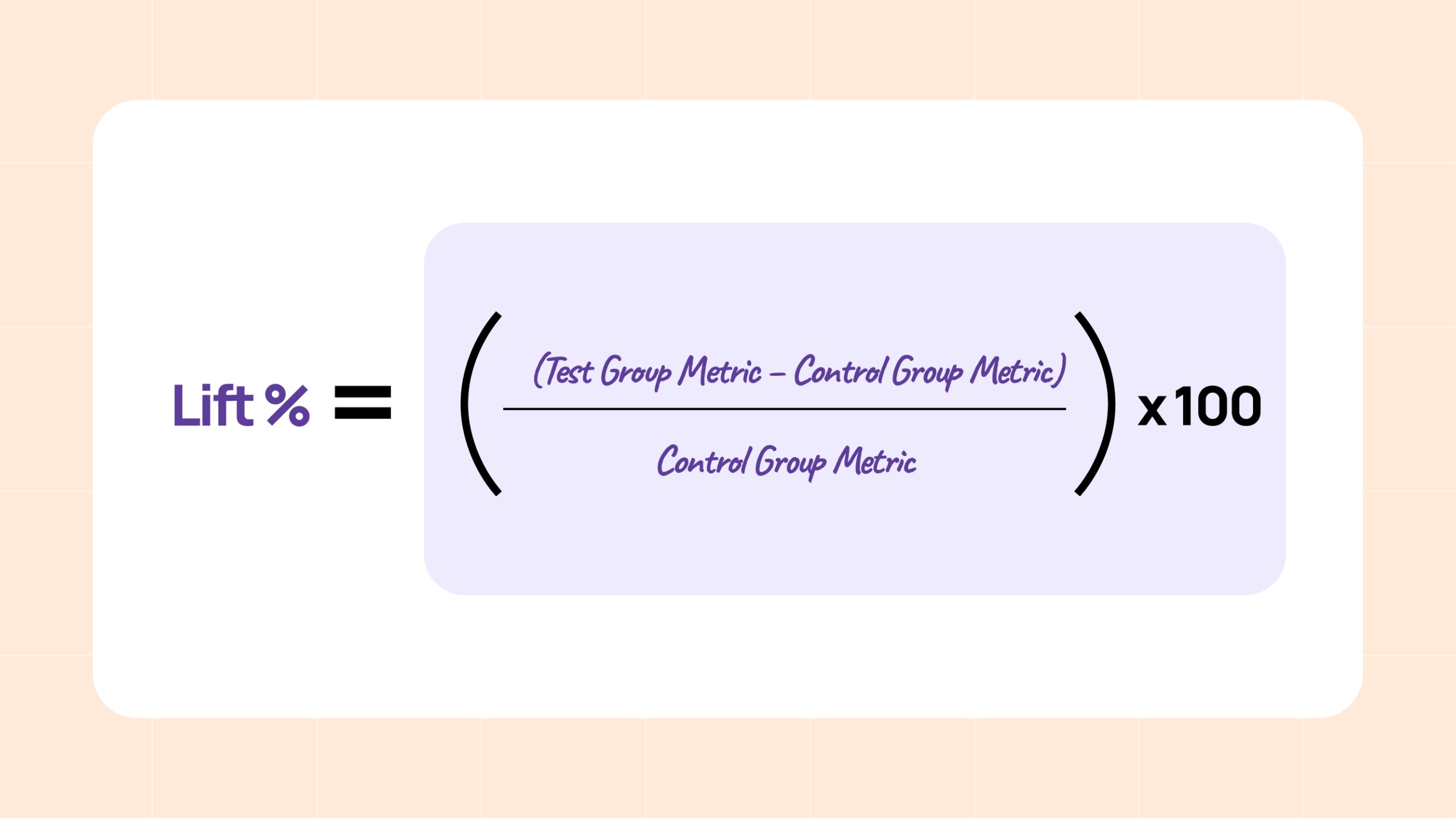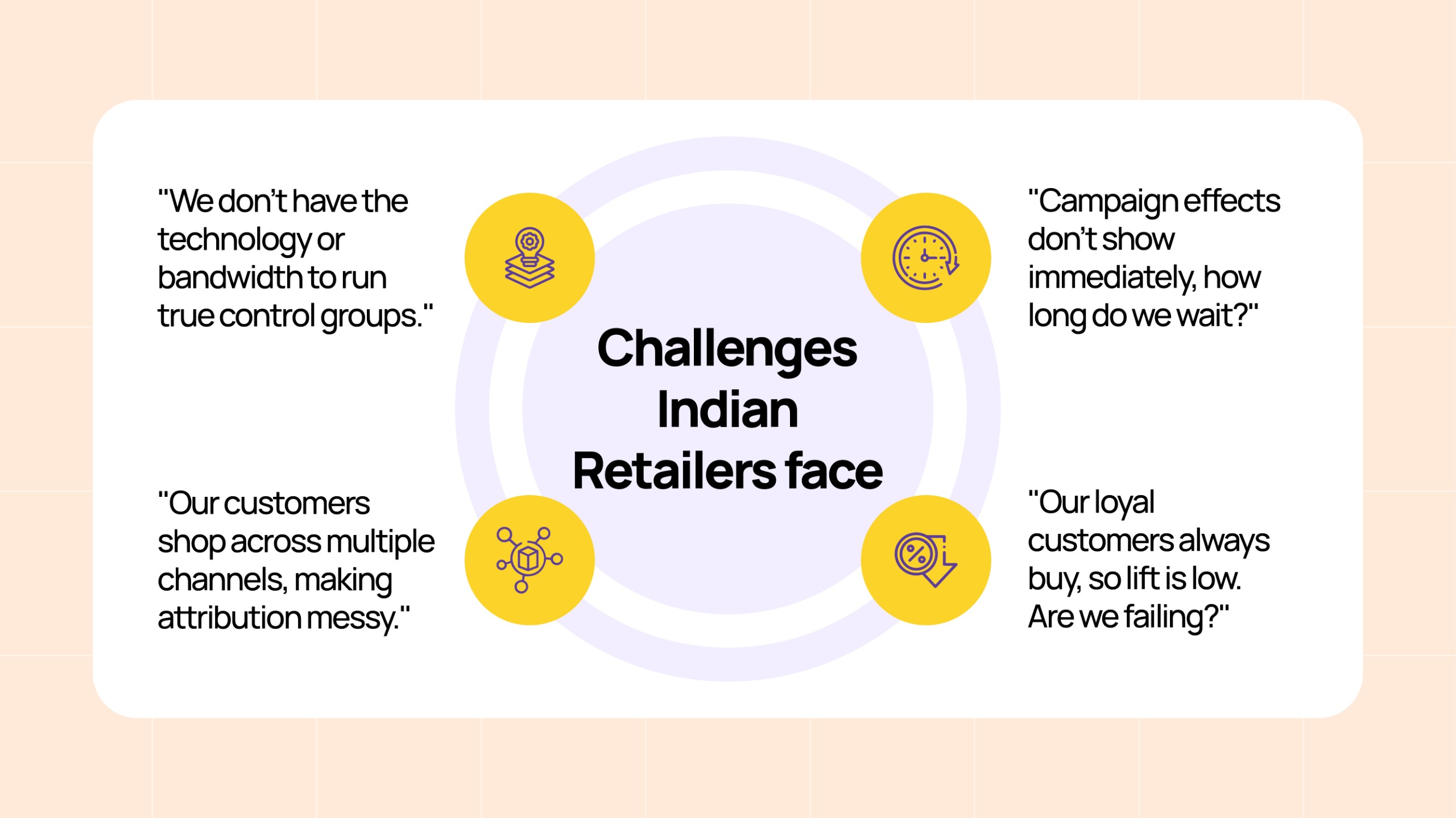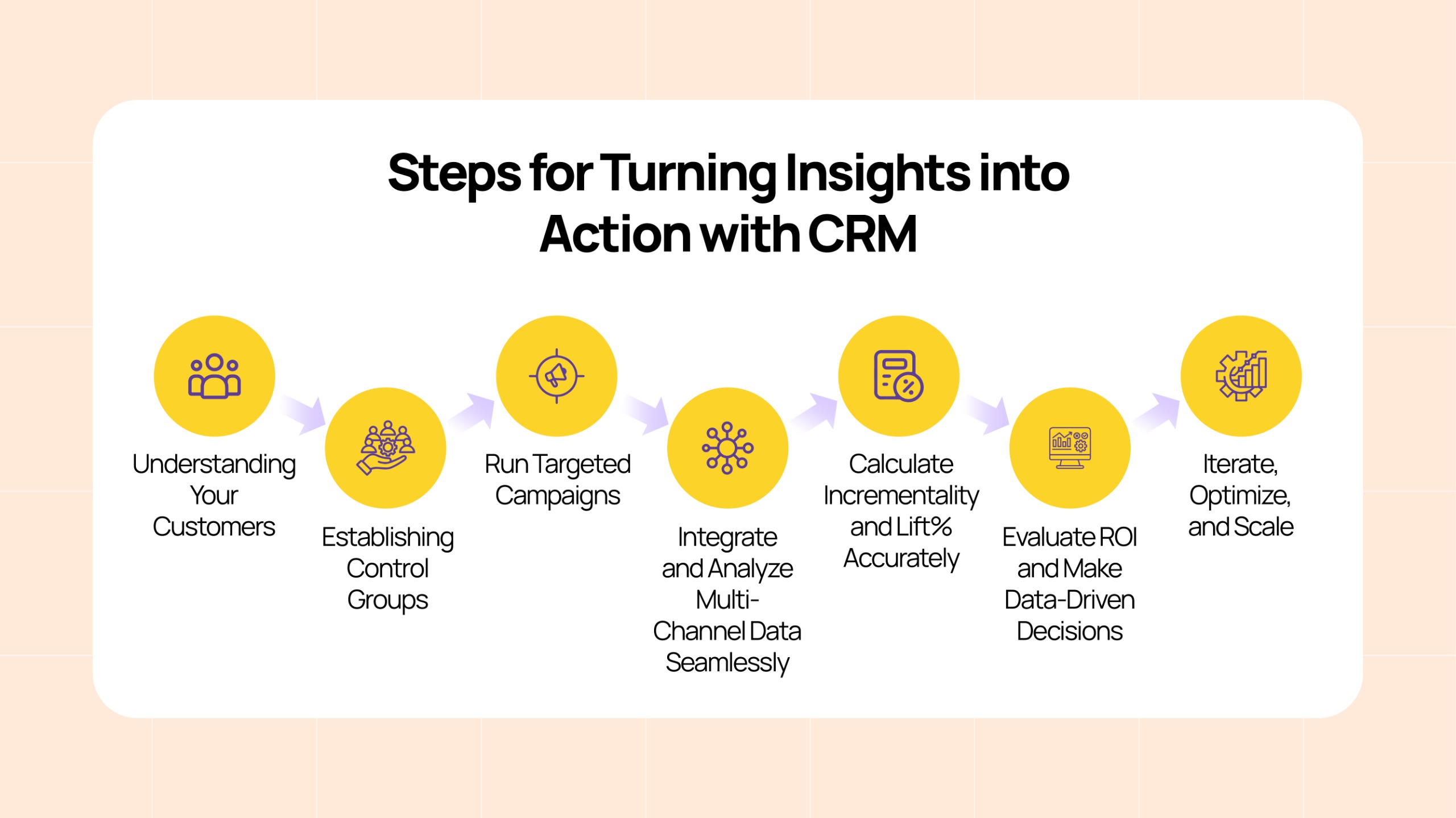
If you’re a business leader, CMO, or CRM manager, you’ve probably faced the same nagging question: “Are our CRM campaigns really driving incremental revenue, or are we just attributing sales that would have happened anyway?”
You might be looking at your campaign dashboards, where you see metrics like open rates, click-throughs, and attributed sales, and feeling confident. But deep down, you wonder if those numbers tell the whole story. After all, how do you prove, beyond doubt, that your marketing budget is generating real, additional growth?
This is where most CRM measurement falls short. Traditional metrics show correlation, but not causation. To truly understand and demonstrate the ROI of your CRM efforts, you need to dig deeper into the concepts of incrementality and lift%, which are powerful tools that cut through the noise and reveal your marketing’s real impact.
Let’s understand what these mean, why they matter, and how you can use them even in complex Indian retail environments to convert your CRM from a cost center into a revenue-driving engine.
Why Traditional Metrics Can Be Misleading?
Imagine you run a personalized SMS campaign that offers your loyal customers an exclusive discount. The post-campaign report shows a 15% increase in sales among the recipients. That sounds like a win, right?
But here’s the catch: Some of those customers might have bought from you anyway, discount or no discount. Maybe they were already planning their monthly grocery run or had a birthday coming up. Maybe they saw your in-store displays or heard about your offers elsewhere.
Traditional metrics don’t distinguish these scenarios. They simply attribute all the sales to your campaign, which can lead to an overinflated view of success.
In the Indian retail scenario, where customers shop across multiple channels, from bustling bazaars to e-commerce platforms, this problem becomes more pronounced. With so many touchpoints, figuring out which channel actually drove the purchase becomes tricky. Therefore, you require other key metrics that highlight the importance of CRM in enhancing ROI.
Incrementality: The Real Measuring Unit of Marketing Impact
The concept of Incrementality asks a simple but profound question: “How much additional revenue did my CRM campaign actually cause?”
The idea behind this concept can be thought of in this way: if you hadn’t sent that SMS, how many fewer sales would you have made? Thus, incrementality measures that difference, helping you see what your CRM truly contributed, separate from the baseline behavior of your customers.
And lift%? It’s the percentage increase in key performance metrics like sales or visits that your campaign caused compared to a control group that did not receive the campaign.
Incrementality is calculated by running controlled experiments:
- Define Test and Control Groups: Randomly split your audience into two statistically similar groups.
- Run Campaign Only on Test Group: The control group receives no CRM outreach during the campaign period.
- Compare Performance: Calculate key metrics (revenue, visits, repeat purchases) for both groups.

A positive lift means your campaign generated additional revenue.
Why Indian Retailers Struggle with Incrementality
Even with this elegant theory, many Indian retailers hit practical roadblocks:
Challenge 1: “We don’t have the technology or bandwidth to run true control groups.”
Solution:
Modern CRM platforms automate control group creation and incrementality tracking, eliminating manual effort and complexity.
Challenge 2: “Our customers shop across multiple channels, making attribution messy.”
Solution:
Integrate POS, e-commerce, mobile app, and CRM data into a centralized system. Use incrementality measurement to isolate the unique impact of each CRM channel rather than relying on flawed last-click models.

Challenge 3: “Campaign effects don’t show immediately, how long do we wait?”
Solution:
Set campaign-specific observation windows. For fast-moving FMCG products, 7–10 days may suffice; for apparel or durable goods, track up to 30 days to capture delayed buying behavior.
Challenge 4: “Our loyal customers always buy, so lift is low. Are we failing?”
Solution:
Segment your audience by loyalty tiers. While loyal customers may show lower incremental lift, their overall lifetime value remains high. For occasional buyers, even a small lift can be highly profitable.
Impact on Incrementality From People Who Always Buy
Another common worry that you might face is: loyal customers tend to buy frequently. Won’t their lift be low, making campaigns look ineffective?
Not necessarily. Loyal customers may show smaller incremental increases per campaign but deliver much higher lifetime value overall. In this case, incrementality helps you balance short-term lift with long-term loyalty strategies.
For occasional buyers or new customers, even a modest lift can translate into significant revenue gains. Thus, segmenting customers by purchase frequency and analyzing lift separately for each group helps tailor your CRM approach and budget effectively.
How Do You Measure Incrementality and Lift% in the Real World?
The most reliable way to measure incrementality and lift% is through controlled experiments, or test-and-control groups.
In this, you randomly split your audience: one group gets the campaign, the other doesn’t. After the campaign, you compare behaviors. The difference is your true incremental impact.
But here’s the reality for many Indian retailers: setting up and managing these tests feels daunting. It requires technology, data integration, and statistical know-how, not to mention time.
Thankfully, today’s AI-powered CRM platforms, like eWards InsightX, automate this process. They dynamically create control groups and track lift behind the scenes, making it possible to measure incrementality without manual headaches.
Turning Insights into Action with CRM
Measuring incrementality and lift% is powerful, but translating those insights into a practical, repeatable CRM strategy. It’s about creating a feedback loop where data drives smarter campaigns, optimized budgets, and stronger customer relationships. The steps for the same are:
- Understanding Your Customers
Start by segmenting your audience based on purchase history, frequency, channel preferences, and responsiveness. Knowing who your loyalists, occasional buyers, and dormant customers are allows you to tailor campaigns that resonate with each group, maximizing incremental impact.
- Establishing Control Groups
Randomly select a portion of your audience to form control groups that do not receive the CRM campaign. This provides a clean baseline against which you can measure true campaign impact. The control group should mirror the test group in demographics and behavior to ensure fair comparison.
- Run Targeted Campaigns
Design your campaigns with a clear hypothesis and objective, whether it’s increasing repeat purchases, driving higher average order value, or reactivating lapsed customers. Deliver your messages only to the test group while leaving control groups untouched during the campaign window.

- Integrate and Analyze Multi-Channel Data Seamlessly
Pull together data from all relevant sources, including point-of-sale systems, e-commerce platforms, mobile apps, email, and SMS, to track customer behavior holistically. This integration is critical for accurately measuring incremental lift, as purchases can happen across multiple touchpoints.
- Calculate Incrementality and Lift% Accurately
Using the performance difference between the test and control groups, find out the lift% and incremental revenue. This quantifies exactly how much additional business your campaign generated beyond organic behavior.
- Evaluate ROI and Make Data-Driven Decisions
Compare incremental revenue against your campaign costs to determine true ROI.
ROI = (Incremental Revenue – Campaign Cost) / Campaign Cost × 100
Use this insight to decide which campaigns, channels, and customer segments deserve more investment and which should be rethought or paused.
- Iterate, Optimize, and Scale
Incrementality measurement is not a one-time exercise. Continuously apply these principles across campaigns, refining your segmentation, creative, timing, and channel mix. Over time, this approach transforms your CRM into a finely tuned engine driving sustainable, measurable growth.
Conclusion
If you want your CRM to be more than just a channel for sending messages and if you want it to truly become a growth engine, you must embrace incrementality and lift% as your guiding stars.
They help you cut through marketing noise, prove your campaigns’ worth with data, and make smarter, faster decisions.
Because this is the era of marketers who stop guessing and start measuring.